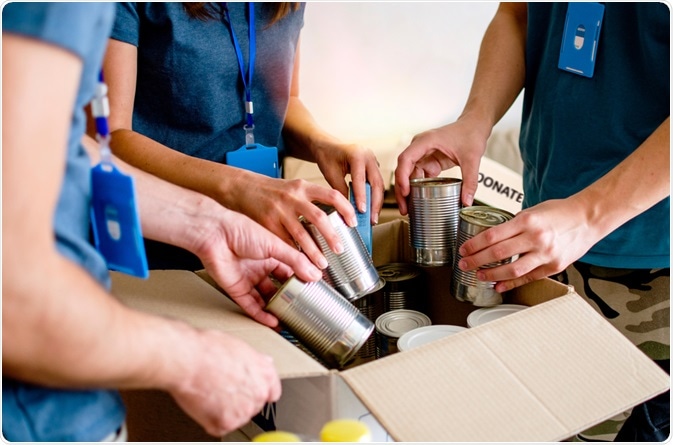The COVID-19 pandemic caused the needs for humanitarian aid to increase by 40% compared with 2019’s needs. As the pandemic wore on over 2020, the need for aid grew, but humanitarian funding failed to keep pace.

Image Credit: Pearl PhotoPix/Shutterstock.com
National lockdowns across the globe, losses of income, and reduced access to social safety nets acted as factors to forcing people into more vulnerable positions and worsen conditions for those already vulnerable. In 2020, people faced increased levels of food insecurity, job insecurity, difficulties in accessing healthcare, and threats to mental and physical health due to the COVID-19 pandemic. Here, we discuss how this led to an increased need for humanitarian aid, and how the world failed to meet this demand.
Loss of income and reduced access to social support increased the need for humanitarian aid
Humanitarian information service ReliefWeb, provided by the United Nations Office for the Coordination of Humanitarian Affairs (OCHA) has recently released data that depicts how the COVID-19 pandemic impacted humans around the world and illustrates how humanitarian aid responded to the needs of the people during this time.
Six months into the pandemic, almost half of lower-income adults (46%) reported they were experiencing trouble paying bills and roughly a third (32%) said they had struggling to pay their rent or mortgage. Further to this, a quarter of US adults (25%) said themselves or someone in their household had lost their job due to the pandemic. Data also showed that lower-income adults who lost their job were less likely than middle- and upper-income adults in the same position to have found a new position.
The COVID-19 pandemic impacted those already struggling significantly worse than those who were comfortable before the pandemic. This disparity translated to an increased need for support from government agencies and charitable organizations. However, the pandemic also had a negative impact on the operations of such international organizations that deliver humanitarian aid.
The restrictions implemented due to the pandemic caused international organizations to reduce the number of staff they could employ to work in the field, this often left local organizations having to thinly stretch their limited resources. As a result, inequality has increased, generally leaving those already struggling in a worse position now than they were at the beginning of the pandemic.
Humanitarian aid fell short in its response to the COVID-19 pandemic
During the COVID-19 pandemic, a total of $6.6 billion has been invested into pandemic response strategies from humanitarian grants. Of this $6.6 billion, a huge $3.7 billion was funneled into the UN’s Global Humanitarian Response Plan. Despite the significant funding pumped into the COVID-19 pandemic response, only 39% of the UN’s Global Humanitarian Response Plan funding requirements were met. With insufficient funding, the global humanitarian response was unable to direct enough resources to those who needed them during the pandemic.
Countries that stood to be supported by the Global Humanitarian Response Plan consistently received less funding than they required during the course of 2020. Of the 52 countries involved in the plan, only five received over 75% of the full funding they required, and a total of 12 countries received less than 25%.
COVID-19 - Humanitarian Response
Lessons to learn from the humanitarian response to the pandemic
Given the inadequate humanitarian response to the COVID-19 pandemic, it is important to ascertain what lessons can be learned to be better prepared to meet future global crises. Experts who have reviewed the global humanitarian response have suggested that moving forward, donors should develop timely, flexible, multi-year finding plans that are sufficient to address the increasing short and long-term needs caused by the pandemic.
While the world is gaining control of the pandemic, allowing life to slowly return to normal with restrictions being lifted and the economy moving once more, the need for humanitarian aid will remain for months and even years to come. Donors must be fully aware of these continuing needs to plan effectively.
Additionally, experts recommend that donors must prioritize where they direct their funding. It is suggested that front-line nongovernmental organizations (NGO) implementers situated in fragile and conflict-affected regions should be those who should receive funding first. This strategy is to ensure that those who are most vulnerable and also most likely to miss out on funding receive aid as a priority. It is also advised that NGOs should accept this increase in demand for aid as the new status quo so that in the future they are better prepared to meet the needs of what may be an increasingly vulnerable population.
While the global humanitarian response to the COVID-19 pandemic failed to meet requirements, it presents an opportunity to learn and prepare for future global crises, so that in the future, the most vulnerable will be better protected.
References:
Further Reading
Last Updated: Aug 11, 2021